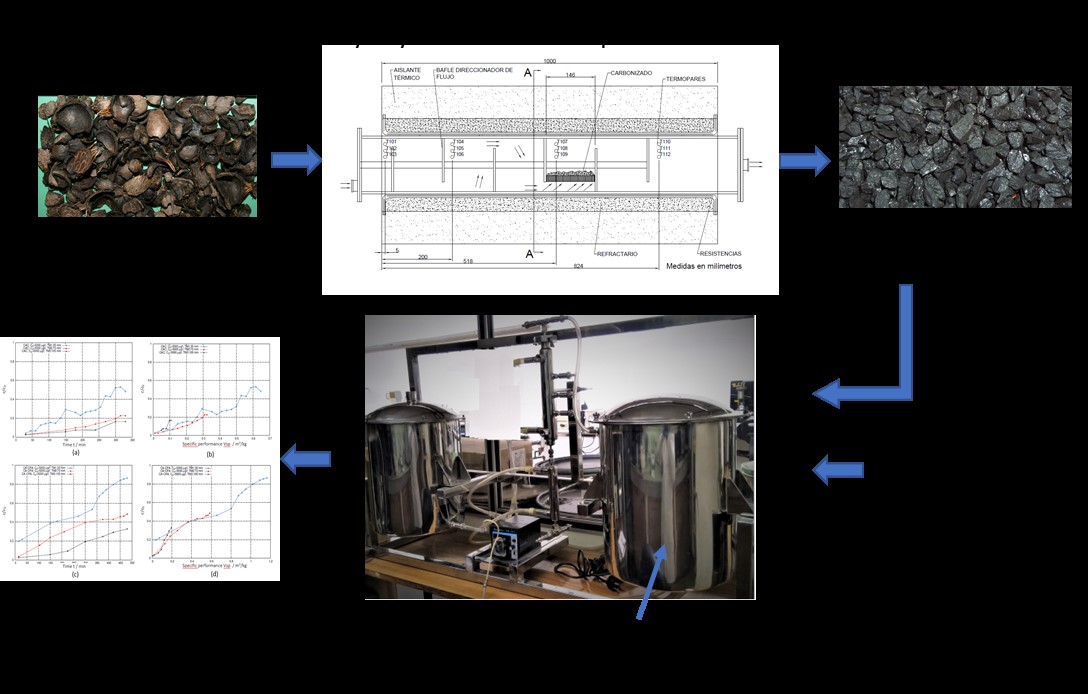
Oil Palm Kernel Shell (OPKS) is a residue of the palm oil extraction process, which has good characteristics for the production of activated carbon (AC). Colombia ranks fourth in the world in palm oil production and it is estimated that in 2019 the amount produced of OPKS was approximately 336000 ton per year. Within the contaminants of surface waters, the pesticide paraquat is identified as one of the most dangerous for human health and is at the same time one of the most used in agriculture in Colombia. It is found worldwide in natural waters in the range of 50 µg/l to 5000 µg/l. Oil palm kernel shells were first carbonized in a horizontal oven under N2 atmosphere until 850 °C for 30 min. After that, three batches, each of 300 g of the carbonized OPKS (COPKS) were activated in the same horizontal reactor by means of partial gasification using H2O as reaction agent. The activation process starts with a heating stage by raising the temperature from 20 °C to 850 °C in approximately 280 minutes under a N2 atmosphere. Then in the activation stage the flow of N2 is replaced by a flow of 20,68 l/min steam while maintaining the temperature at 850 ± 10 °C for another 310 minutes. Finally, the flow of steam is changed to N2 and the oven is cooled down until ambient temperature. As a result of the activation process, an activated carbon (AC-CAC) with approximately 50 % degree of activation and a surface area of 1200 m2/g were obtained. The adsorption capacity of the AC-CAC towards paraquat is studied by measuring breakthrough curves in an adsorption column using initial concentrations of paraquat between 600 µg/l and 5000 µg/l. A comparison is performed by using a commercial activated carbon CAC from the company Donau Carbon ref. Hydraffin®. The determination of the concentration of paraquat in water is made by voltammetry.
Total file downloads: 5